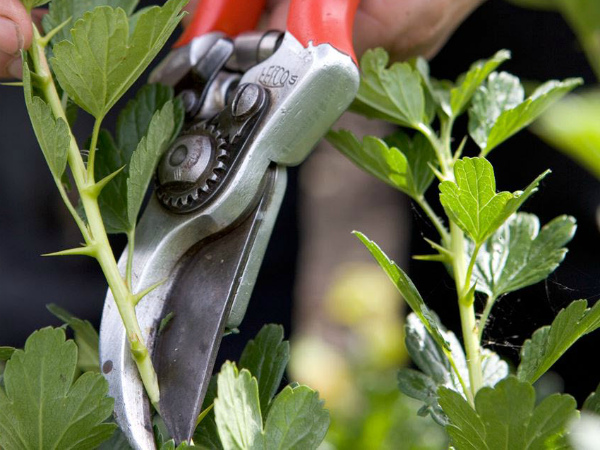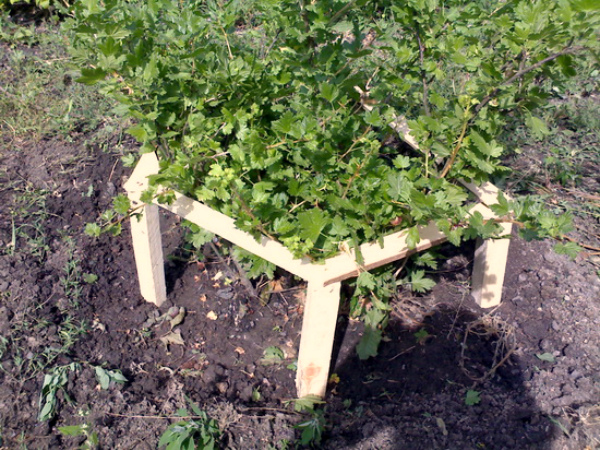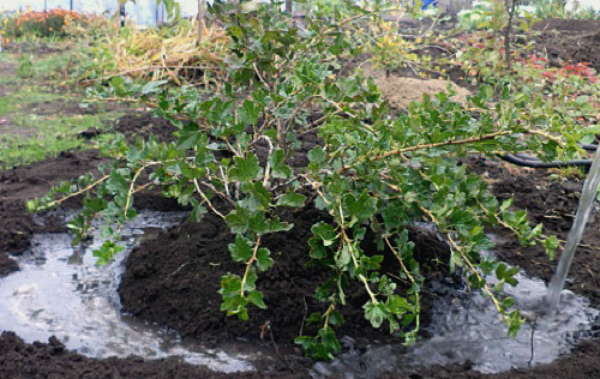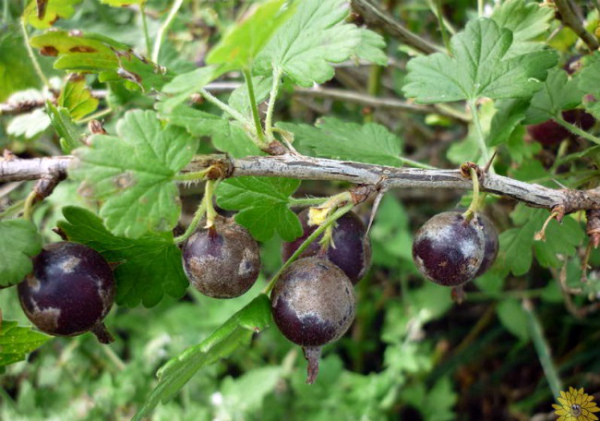Subtleties of gooseberry care in spring
Content
Features of growing gooseberries in the spring
The spring period is rightfully considered one of the most labor-intensive of the year. On the one hand, it is necessary to have time to prepare all the plants for saturated growth, on the other hand, to provide them with protection by carefully treating the soil and the plants themselves with fungicides and insecticides. Add to this pruning, fertilization, transplanting, and you can easily understand why there is so little time in spring just to enjoy the first warmth of the sun.
Gooseberry care begins when the snow hasn't melted yet. The first step is to prune old, weak, dry branches. It is also necessary to get rid of the frozen shoots. With a high probability, fruits will not appear on them, but they will pull nutrients from the bush. It is imperative to cover the cuts with garden lime so as not to introduce infection.
Immediately after pruning, the bushes should be sprayed with boiling water using a spray bottle. Thus, you not only wake him up after hibernation, but also disinfect, killing most of the pests and pathogens.
With the arrival of May, preparatory work is resumed. It is necessary to carefully loosen the soil around the bushes, going 10-12 centimeters deep, and then mulch with straw, sawdust or peat. This is done in order to repeat the procedure only a few times in the future. At the same time, the first feeding with a solution of potassium and nitrogen takes place in order to stimulate a set of green mass.
You can also tie up gooseberry bushes, especially if they are planted in rows. Install stretch marks and pull a net between them, to which at the level of 30 centimeters tie the branches of the bush. This procedure is recommended if the branches of the bush have fallen down or sag.
Watering and fertilizing
Gooseberries, due to their drought tolerance, do not need regular and abundant watering. Of course, if the summer turned out to be very hot and dry, then even gooseberries will need support, and even after fruiting ends. In this case, it is important to monitor the temperature of the water. Watering with cold water is unacceptable, as this adversely affects the root system and the general condition of the bush. Moreover, this makes the plant extremely vulnerable to the development of many fungal diseases.
Do not forget that almost all fungal microflora prefers high humidity and low temperatures, or, which is especially dangerous in hot seasons, high humidity and temperatures.
That is, watering with cold water not only reduces the immunity of the gooseberry, but also awakens the fungus to harmful activity.
To retain moisture during dry periods, it is recommended to mulch the soil with leaves, straw, sawdust or peat to retain moisture in the soil longer.
But gooseberry feeding is needed, moreover, regular and competently composed. Considering the fact that the gooseberry bears fruit every year and rather rarely changes its place of growth, the soil on the site is extremely depleted.That is why it is so important not to skimp on mineral and organic fertilizers in order to maintain a normal balance of nutrients, which gooseberry bushes consume in large quantities during flowering and fruiting.
In the spring, under each bush, it is necessary to add half a bucket of compost mixed with superphosphate (50 grams), ammonium sulfate (25 grams) and potassium sulfate (25 grams). Moreover, for plentifully fruiting bushes, the portion of fertilizer is doubled.
Correct fertilization is carried out around the perimeter of the crown as the roots extend underground in this radius.
For top dressing, gently loosen the trunk circle and mix the fertilizer with the soil. The next feeding of gooseberries is necessary immediately after flowering to ensure good fruiting. It is carried out using mullein infusion: dilute it 1: 5, and then pour at least 5 liters of the resulting solution under each bush.
Disease and pest control
The fight against diseases and insects that harm not only gooseberries, but all plants in the garden and in the garden, is endless. Due to the fact that the same microorganisms that become the causes of diseases easily overwinter in the upper layers of the soil, plant debris and the bark of gooseberry bushes, it is quite difficult to get rid of them once and for all.
The most dangerous disease for gooseberries is powdery mildew. Fungal microflora develops in a humid and warm environment, manifesting itself as a loose white bloom on all aerial parts of the gooseberry. At first, it is quite easy to erase or wash off the plaque from the gooseberry, but if this is not done, it will transform into a brown, compacted growth on the green part of the plant. Under the influence of the fungus, the leaves and shoots of the bush wither and curl, the fruits crack and fall off.
The fight against powdery mildew consists in the prophylactic treatment of the bushes with the preparation “HOM” or “Zircon M” in early spring, as well as in the use of these agents at the first symptoms of the disease. The working proportion for the medicinal solution is 40 grams of the drug per 10 liters of warm water.
White spot, anthracnose, rust and mosaic are no less inconvenient for the plant. They use preventive treatment of bushes and soil around them with the drug "Nitrafen", a solution of copper sulfate or Bordeaux liquid. For any fungal diseases, collecting fallen leaves and then burning them will be a good prevention.
Fighting insects that harm gooseberry plantings is another important step in caring for a plant. Most often, shoot aphids can be seen on young shoots, and on the eve of flowering, moth butterflies are selected from the ground, which lay eggs in inflorescences. The offspring of the moth butterfly spoils the fruits and seeds of the gooseberry. The natural, albeit sad, result of their detrimental effect is the complete wilting of the bush, since it loses a large amount of nutrients.
To prevent the appearance of insects near the gooseberry bushes in the spring, after the snow melts, the soil around the bushes must be covered with any dense material, for example, roofing material. So the offspring of the moth butterfly will not be able to get out of the ground to lay eggs in flowers. After flowering ends, you can remove the covering material.
Carry out preventive spraying of bushes and soil around them with a hot solution of copper sulphate, as well as with Bicol.
Video "Gooseberry: Spring Works"
In this video, you will learn what work needs to be done with gooseberries in spring in order to get a good harvest of berries.





